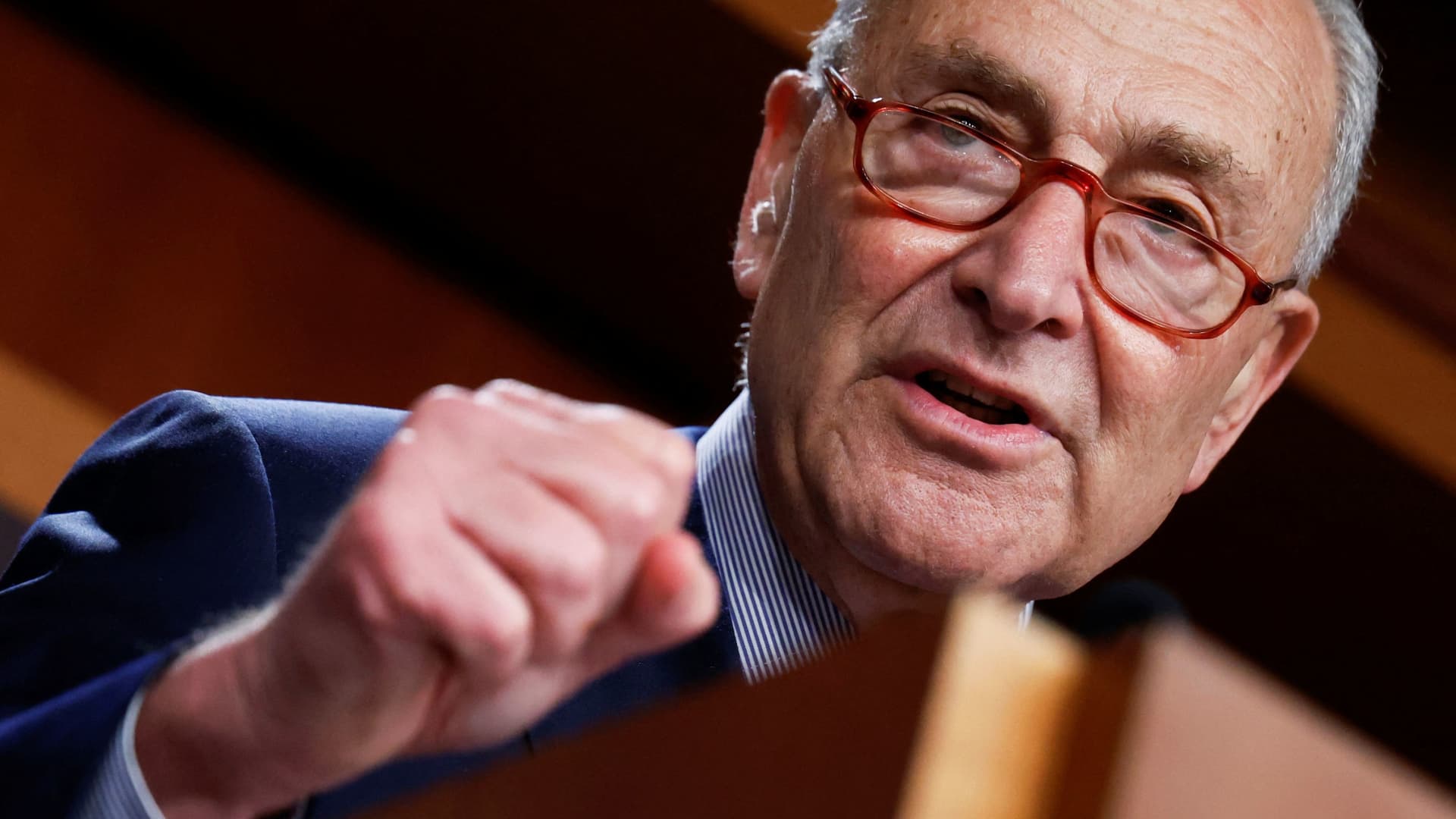US Markets
Friday, October 6th, 2023 1:54 pm EDT
Key Points
- Stronger-Than-Expected Job Growth: The U.S. economy exhibited resilience in September as nonfarm payrolls increased by 336,000 jobs, surpassing expectations. This robust job growth was significantly better than the Dow Jones consensus estimate of 170,000 and marked a substantial improvement over the previous month. The unemployment rate for the month stood at 3.8%, slightly higher than the forecasted 3.7%. This strong employment data suggests that the U.S. economy is holding up well despite various challenges, including higher interest rates, labor disputes, and political issues in Washington.
- Market Reaction and Implications: The release of the positive jobs report had immediate effects on financial markets. Stock market futures turned sharply negative, and Treasury yields experienced an uptick. Stocks opened lower, with the Dow Jones Industrial Average down approximately 150 points in early trading. The 10-year Treasury yield rose by 0.11 percentage point to 4.83%, reaching levels not seen since the early days of the financial crisis. Investors were concerned that a robust economy might lead the Federal Reserve to maintain or raise interest rates to combat persistently high inflation. This concern prompted the negative market reaction. Traders in the fed funds futures market increased the odds of a rate increase before the end of the year to about 44%, indicating growing expectations that the Federal Reserve may not be finished with its rate hikes.
- Wage Growth and Future Fed Policy: While job growth exceeded expectations, wage increases were softer than anticipated. Average hourly earnings increased by 0.2% for the month and by 4.2% from a year ago, falling short of estimates for 0.3% and 4.3%, respectively. This softer wage growth, combined with the strong job numbers, has implications for Federal Reserve policy. The bond market’s influence on stock prices has been notable, with the bond market’s movements impacting stock market dynamics. The expectation of the Federal Reserve’s future actions, including potential rate hikes, has been a source of concern for investors. Policymakers believe that a tight labor market will continue to exert upward pressure on wages, contributing to higher prices. The article highlights that the Federal Reserve’s decision-making will be closely watched as it seeks to balance economic growth and inflation control.
In September, the U.S. job market demonstrated robust growth, surpassing expectations and indicating the resilience of the American economy in the face of various challenges such as higher interest rates, labor disputes, and political turmoil in Washington.
The U.S. Labor Department’s report revealed that nonfarm payrolls increased by 336,000 for the month, exceeding the Dow Jones consensus estimate of 170,000 by more than 100,000. This significant job growth comes as a positive sign amid concerns about the economy’s ability to weather adverse conditions. The unemployment rate for September stood at 3.8%, slightly higher than the forecasted 3.7%.
However, the strong job growth had an immediate impact on financial markets. Stock market futures sharply declined following the report, and Treasury yields experienced an uptick. The Dow Jones Industrial Average opened lower, with an early trading loss of nearly 150 points. The 10-year Treasury yield surged by 0.11 percentage points to 4.83%, reaching levels not seen since the early days of the financial crisis.
This increase in nonfarm payrolls represents the strongest monthly job growth since January, suggesting that the U.S. labor market remains resilient. Investors had been concerned that a robust economy might lead the Federal Reserve to maintain or even raise interest rates to combat persistently high inflation. This concern prompted the negative market reaction to the strong jobs report.
While job growth exceeded expectations, wage increases were somewhat softer than anticipated. Average hourly earnings increased by 0.2% for the month and by 4.2% from a year ago, falling short of estimates for 0.3% and 4.3%, respectively.
In response to the strong jobs report, traders in the fed funds futures market increased the odds of a rate hike before the end of the year to approximately 44%, according to the CME Group’s tracker. This indicates growing expectations that the Federal Reserve may not be finished with its rate hikes.
The bond market’s influence on stock prices has been notable, with the bond market’s movements impacting stock market dynamics. This trend gained momentum earlier in the week when the Labor Department reported a significant increase in job openings for August.
In terms of sectors, leisure and hospitality led the way with the addition of 96,000 new jobs in September. Other sectors that experienced job gains included government (73,000), healthcare (41,000), and professional, scientific, and technical services (29,000). However, the motion picture and sound recording industry saw a decline of 5,000 jobs, with a total decrease of 45,000 jobs since May due to labor disputes in Hollywood.
Service-related industries contributed significantly to total job growth, accounting for 234,000 jobs, while goods-producing industries added just 29,000 jobs. In the leisure and hospitality industry, average hourly earnings remained flat for the month but increased by 4.7% from a year ago.
The private sector’s gain in payrolls was substantial, with an increase of 263,000 jobs, significantly higher than the earlier report from ADP, which indicated a gain of only 89,000 jobs.
Furthermore, the previous two months saw substantial upward revisions. August’s job gain was revised to 227,000, up by 40,000 from the previous estimate, while July was revised to 236,000 from 157,000. Combined, these revisions resulted in an increase of 119,000 jobs compared to previous reports.
The household survey, used to calculate the unemployment rate, recorded an increase of 215,000 employed individuals.
The labor force participation rate, which measures the portion of the workforce that is employed, remained steady at 62.8%, which is still half a percentage point below pre-Covid pandemic levels. The rate for individuals in the 25-to-54 age group also remained unchanged at 83.5%. A more comprehensive measure of unemployment, which includes discouraged workers and those holding part-time positions due to economic reasons, slightly decreased to 7%.
The release of this September jobs report comes at a critical juncture for both financial markets and the broader economy. Rising Treasury yields and declining stocks have raised concerns that the continued strength of the economy could compel the Federal Reserve to maintain a tight monetary policy. The central bank has raised interest rates by 5.25 percentage points since March 2022 to combat inflation that remains significantly above the Fed’s 2% target.
Several policymakers have expressed ongoing concerns about inflation, suggesting that while another rate hike before the end of the year is uncertain, interest rates are likely to remain elevated for an extended period. Market expectations do not currently favor another rate hike, but the prevailing narrative of higher rates for a more extended duration has been unsettling for investors. Higher interest rates can increase the cost of capital and run counter to the easy monetary policy that has supported Wall Street’s performance for much of the past 14 years.
The strong job market is a pivotal factor in the context of interest rates. Policymakers believe that a tight labor market will continue to exert upward pressure on wages, contributing to higher prices. While the Fed initially did not attribute wage increases to the initial surge in inflation in 2021-22, they have become more significant recently. This September report reinforces the complexities that the Fed must navigate as it strives to balance economic growth and inflation control.
For full original article on CNBC, please click here: https://www.cnbc.com/2023/10/06/jobs-report-september-2023.html




